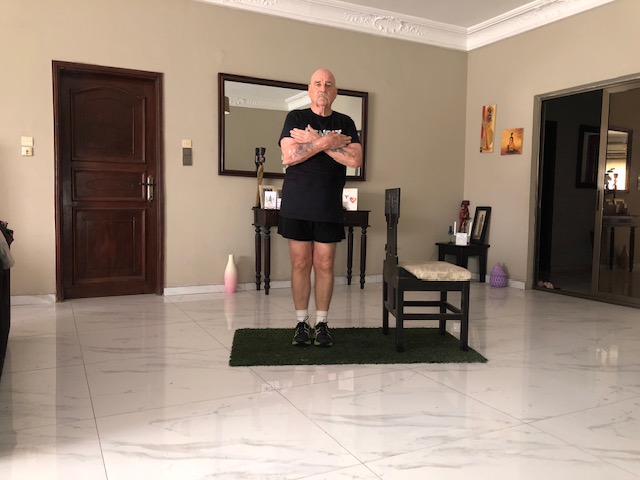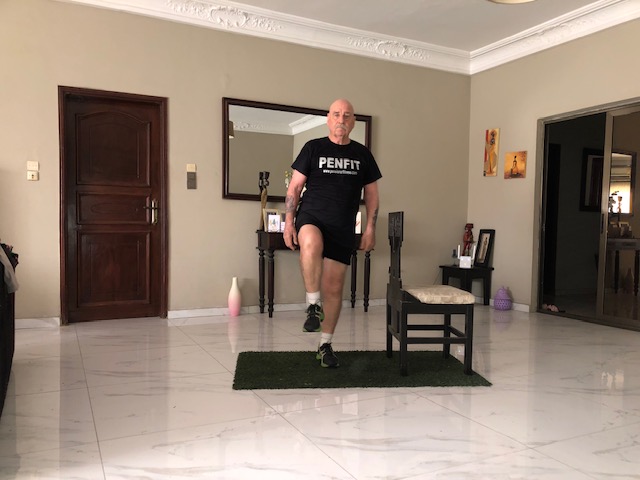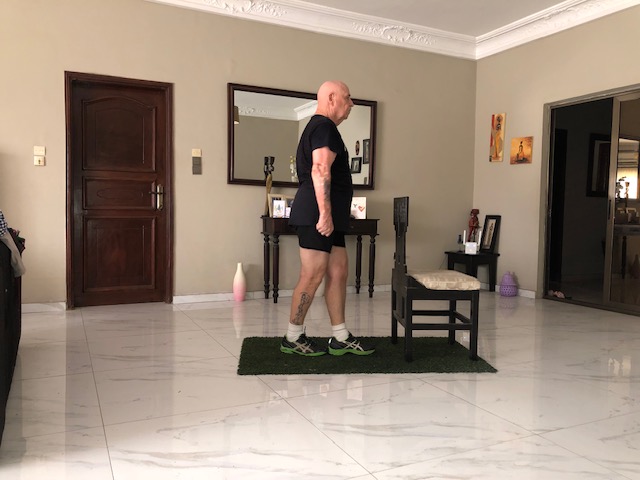
Introduction To Balance Exercises 3
Balance Exercises 3. Maintaining good balance is a fundamental aspect of senior well-being. As we age, changes in muscle strength and flexibility can impact our stability, increasing the risk of life-threatening falls. Also, many falls happen in the home, especially after waking up. However, the good news is that balance can be improved and maintained through targeted exercises. Here, these exercises are designed to enhance stability, confidence, and overall quality of life. And allowing you to continue enjoying daily activities with ease. Therefore, from simple standing routines to more advanced moves, we’ll provide a range of exercises.
So then, by incorporating these exercises into your daily routine. Hence, you can take confident steps toward a more balanced, secure, and active life in your senior years. So then, it’s time to regain your footing and embrace the benefits of balance exercises for seniors.
Why Balance is Important for Older Adults?
Balance Exercises 3. Balance exercises are crucial for older adults for a multitude of reasons. Besides, as individuals age, their sense of balance tends to decline. And can lead to an increased risk of falls and related injuries.
Here, we will delve into the importance of balance exercises for older adults, and the benefits they offer. And some practical examples of exercises that can help maintain and improve balance in older adults.
Fall Prevention
Balance Exercises 3. The risk of falls among the elderly is a pervasive and pressing issue. According to the World Health Organization, falls are the second leading cause of accidental or unintentional injury deaths worldwide. Generally, with seniors being particularly vulnerable.
As we age, our bodies change, such as a decrease in muscle mass and bone density. Also, making falls more likely and the consequences more severe. Balance exercises play a pivotal role in addressing this concern.
By enhancing stability and coordination, they significantly reduce the likelihood of falls. Hence, seniors who engage in regular balance training are better equipped to navigate the challenges of uneven surfaces or unexpected obstacles, Thus, helping to safeguard their well-being.
Maintaining Independence
Balance Exercises 3. The ability to maintain one’s independence is a fundamental desire of all older adults. But everyday activities that might seem routine to the younger population, such as walking, standing up from a siting. even maintaining balance while reaching for objects, can become arduous tasks for seniors.
Here, a strong sense of balance empowers older individuals to perform these daily tasks with confidence and without the need for assistance.
The simple act of rising from a chair or walking across a room becomes less daunting, fostering a sense of autonomy that is invaluable to the older adult.
Enhancing Quality of Life
Balance Exercises 3. The quality of life for older individuals is intricately linked to their mobility and sense of security. Consequently, when seniors can move about without the constant fear of falling, their lives open up to a world of possibilities.
They are more likely. To participate in social activities, engage in regular exercise, and pursue hobbies and interests that bring joy and fulfillment. Furthermore, the emotional and psychological benefits of this newfound freedom cannot be overstated.
The enrichment of one’s quality of life is perhaps one of the most compelling arguments for incorporating balance exercises into the daily routine of older adults.
Muscle Strength and Endurance
Balance Exercises 3. One of the lesser-known but equally critical aspects of balance exercises for the elderly is their profound impact on muscle strength and endurance. As we age, a gradual decline in muscle mass and strength, a condition known as sarcopenia, becomes a pressing concern.
This loss of muscle not only makes everyday tasks more challenging but also increases the risk of frailty and disability. Balance exercises, however, provide a multifaceted solution to this issue.
When seniors engage in balance exercises, they often target a wide array of muscle groups throughout their bodies.
Movements that involve maintaining balance on one leg, for instance, require the activation of various muscles in the legs, hips, and core. Over time, this targeted muscle engagement results in notable gains in strength and endurance.
Cognitive Benefits
Balance Exercises 3. The cognitive advantages of balance exercises are a lesser-known yet remarkable aspect of their impact on older adults. These exercises require not only physical effort but also mental acuity.
First and foremost, balance exercises help improve concentration. Seniors must pay close attention to their movements and body positioning, fostering greater mindfulness and mental presence.
This heightened focus can extend beyond the exercise routine, enhancing their ability to concentrate on other tasks and activities. Additionally, balance exercises promote coordination and spatial awareness.
These skills are essential for navigating the physical world, from avoiding obstacles on a walk to safely reaching for objects on a high shelf. By honing these abilities, seniors can more confidently and safely go about their daily lives.
1. Romberg balanced stance

- The person is asked to stand with his two feet together. The arms are held next to the body or crossed in front of the body.
- The subject must first stand quietly with eyes open,
- The subject tries to maintain his or her balance.
- For safety, the subject must stand close to a wall or chair for support. the subject to prevent potential injury if the subject were to fall. When the subject closes his eyes, he should not orient himself by light, sense, or sound,
- The Romberg stance is scored by counting the seconds the person can stand with eyes closed. Practise each day.
2. Single-leg stance
The ability to stand on one leg is important. When walking, you spend about 40% of your time with one foot on the ground as the opposite leg is moving through the air. As an example, the single leg stance, is a simple, but very effective exercise for improving balance. Improving your balance can help improve performance, and it can help you prevent falls that can cause serious injury

- Stand upright with your feet together. Remain safe while performing this; have a stable object like a chair or kitchen counter nearby so you can grab it if you start to feel unsteady.
- Lift one foot off the ground. Do not to allow your legs to touch (this may give you extra stability).
- Watch a clock to see how many seconds you can stand on one foot and record this number.
- If you can stand on one foot for 10 seconds, practice each day to reach 30 seconds
Why this is important: You stand on one leg every time you take a step or walk up and down stairs. Don’t underestimate the importance of the single-leg stance exercise!
3. The Tandem Stance

Stand with one foot in front of the other so you are in a “heel-toe” position. If this is too difficult initially, move your feet apart slightly. Use a counter or chair for support, as needed. Hold this position for at least 10 seconds on each side. But practise to increase the time each day.
Why this is important: This exercise is great because it puts your body into a narrow stance. With a decreased base of support, you will challenge your muscles to keep you centered!
4. Mini Lunges

- Stand with your feet shoulder-width apart. While holding onto a counter or firm surface, step forward and bend your front knee slightly. Return to your starting position and repeat with the opposite leg.
- The lunge does not need to be deep. If you experience increased knee or hip pain, modify this exercise by holding onto a counter and taking smaller steps.
- Perform mini lunges on each leg. Practice this each day.
Why this is important: This exercise strengthens the legs while simulating forward stepping motion. If you sometimes stumble forward, this exercise will help you practice catching yourself before you would actually fall!
Video
DONATE
Pensioner Fitness Awards
THE BUSINESS CONCEPT, BEST IN BUSINESS AWARDS 2023
1. MOST INSPIRING SENIOR WELLNESS WEBSITE 2023
THE GLOBAL HEALTH AND PHARMA, FITNESS AND NUTRITION AWARDS 2023
2. BEST SENIOR FITNESS AND NUTRITION SPECIALIST 2023
MIDDLE EAST AND AFRICA BUSINESS AWARDS 2023
3. MOST INCLUSIVE FITNESS PROVIDER 2023
In Conclusion
Balance exercises for seniors are not just about staying on your feet. However, they are about regaining control, confidence, and a better quality of life. these exercises are invaluable in promoting stability, preventing falls, and enhancing your overall well-being.
By incorporating these routines into your daily life, you’ve taken proactive steps toward maintaining your independence. And enjoying an active, fulfilling senior life.
Remember, progress might be gradual, but the rewards are worth it. Whether you’re a senior looking to stay steady on your feet or a caregiver helping a loved one, balance exercises offer immense benefits.
Embrace these routines with patience and persistence, and you’ll find yourself walking with confidence, enjoying the world around you, and living life to the fullest. Balance is more than a physical feat; it’s the foundation of an empowered and vibrant senior life.
Important Note *
Remember that everyone is different, it is ultimately YOUR RESPONSIBILITY to find what your body responds to. So please do your due diligence before trying anything new, including getting Medical Advice to ensure your safety and peace of mind.
Connect with me and leave a comment or two on my social media…

One reply on “Balance Exercises 3”
[…] Balance Exercises Source: ‘Pensioner Fitness,’ Ian […]